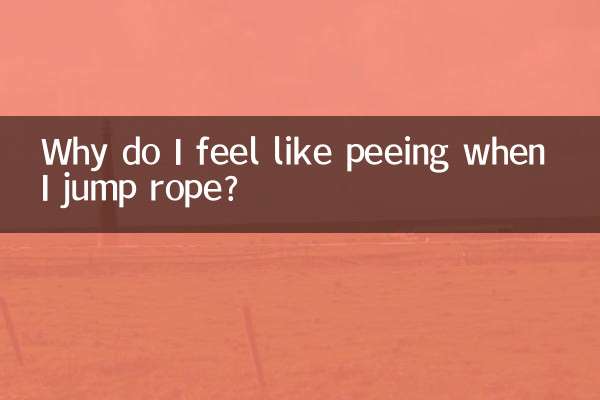How to treat gout attacks
Gout is a type of arthritis caused by abnormal uric acid metabolism, and its incidence has increased year by year in recent years. This article will combine the hot topics and hot content on the Internet in the past 10 days to give you a detailed introduction to the treatment methods for gout attacks and provide structured data for reference.
1. Common symptoms of gout attacks

During a gout attack, patients typically experience the following symptoms:
| Symptoms | Description |
|---|---|
| sudden joint pain | It usually occurs in the big toe, ankle joint or knee joint, and the pain is severe |
| Redness, swelling, heat and pain | Affected joints will appear red, swollen and warm |
| Restricted activities | Joint movement may be limited due to pain and swelling |
| duration | Without treatment, symptoms may last 3-10 days |
2. Acute phase treatment of gout attacks
When gout attacks acutely, the following treatment measures should be taken promptly:
| Treatment | Specific measures |
|---|---|
| drug treatment | NSAIDs (such as ibuprofen), colchicine, or corticosteroids |
| local cold compress | Apply ice pack to the affected area for 15-20 minutes each time, with an interval of 1 hour |
| Raise the affected limb | Elevate the affected limb to help reduce swelling |
| Get enough rest | Avoid moving affected joints to reduce pain |
3. Long-term management of gout
In addition to acute treatment, gout patients also need to pay attention to long-term management:
| Management | Recommended actions |
|---|---|
| Diet control | Limit the intake of high-purine foods (such as seafood and animal offal) |
| drink water | Keep the daily water intake above 2000ml to promote uric acid excretion |
| weight control | Maintain ideal weight and avoid obesity |
| drug treatment | Take uric acid-lowering drugs (such as allopurinol, febuxostat) as directed by your doctor |
| Regular review | Monitor blood uric acid levels and control them below 360 μmol/L |
4. Misunderstandings to avoid
When treating gout, you need to pay attention to the following common misunderstandings:
| Misunderstanding | Correct understanding |
|---|---|
| Only relieves pain but does not reduce acidity | Only pain relief without lowering uric acid will lead to recurrent gout attacks |
| Lower uric acid during attack | It is not advisable to start uric acid-lowering treatment immediately in the acute phase |
| excessively restrictive diet | Strict dietary control can only reduce uric acid by about 60-90 μmol/L |
| No treatment asymptomatic | Asymptomatic hyperuricemia also requires intervention |
5. Latest treatment options
According to recent medical research, the treatment of gout has the following new developments:
| new treatment | Features |
|---|---|
| IL-1 inhibitor | For refractory gout, such as anakinra |
| Uricase therapy | Enzymes that break down uric acid, such as rasburicase |
| New uric acid-lowering drugs | Like topinostat, the mechanism of action is different |
| Minimally invasive surgical treatment | Surgical treatment for tophi |
6. Suggestions on lifestyle adjustments
Gout patients should pay special attention to the following lifestyle adjustments:
1.Diet: Eat more fresh vegetables and fruits, and consume low-fat dairy products in moderation; limit alcohol intake, especially beer; avoid high-fructose drinks.
2.Sports: Moderate exercise helps control weight and improve metabolism, but strenuous exercise should be avoided, which may cause joint damage.
3.Work and rest: Ensure adequate sleep to avoid excessive fatigue and mental stress.
4.Psychological aspects: Maintain a good attitude and face the disease actively.
Summary
Gout is a chronic disease that requires long-term management. In the event of an acute attack, you should seek medical treatment promptly and take medication as directed. At the same time, through reasonable diet control, regular lifestyle and necessary drug treatment, the condition can be effectively controlled and the frequency of attacks can be reduced. Remember, the treatment of gout is not easy and requires long-term persistence from the patient and professional guidance from the doctor.

check the details

check the details